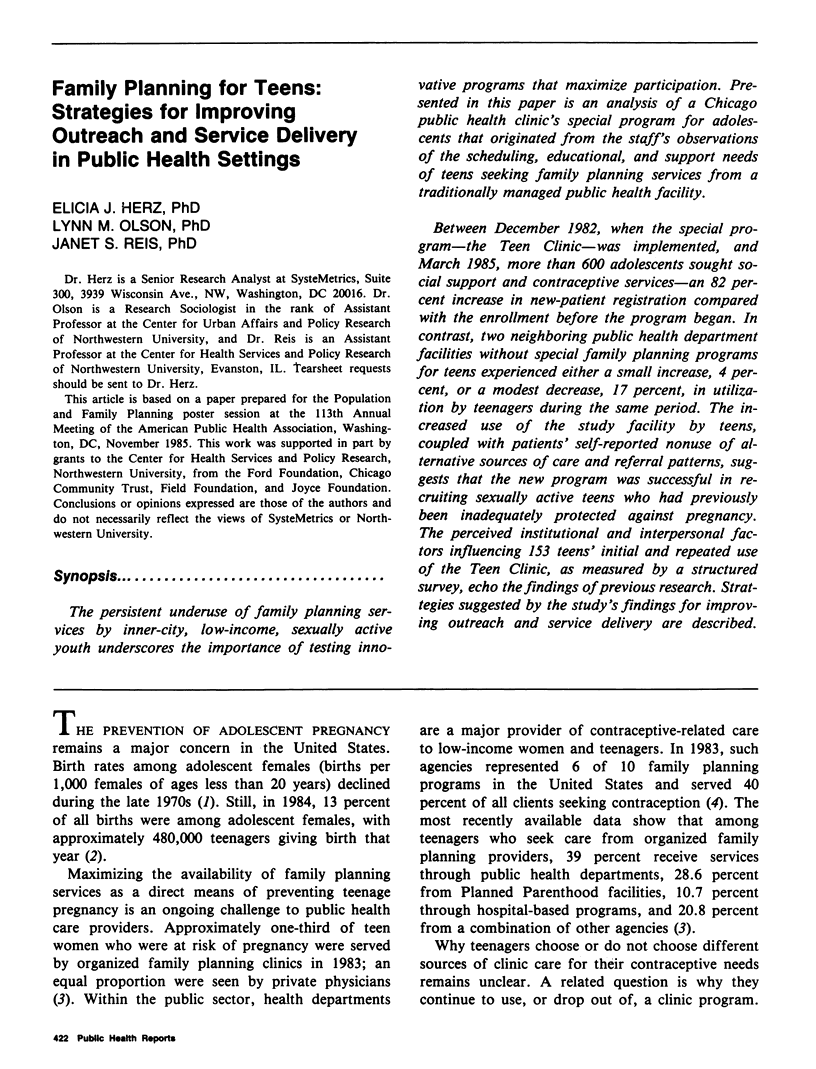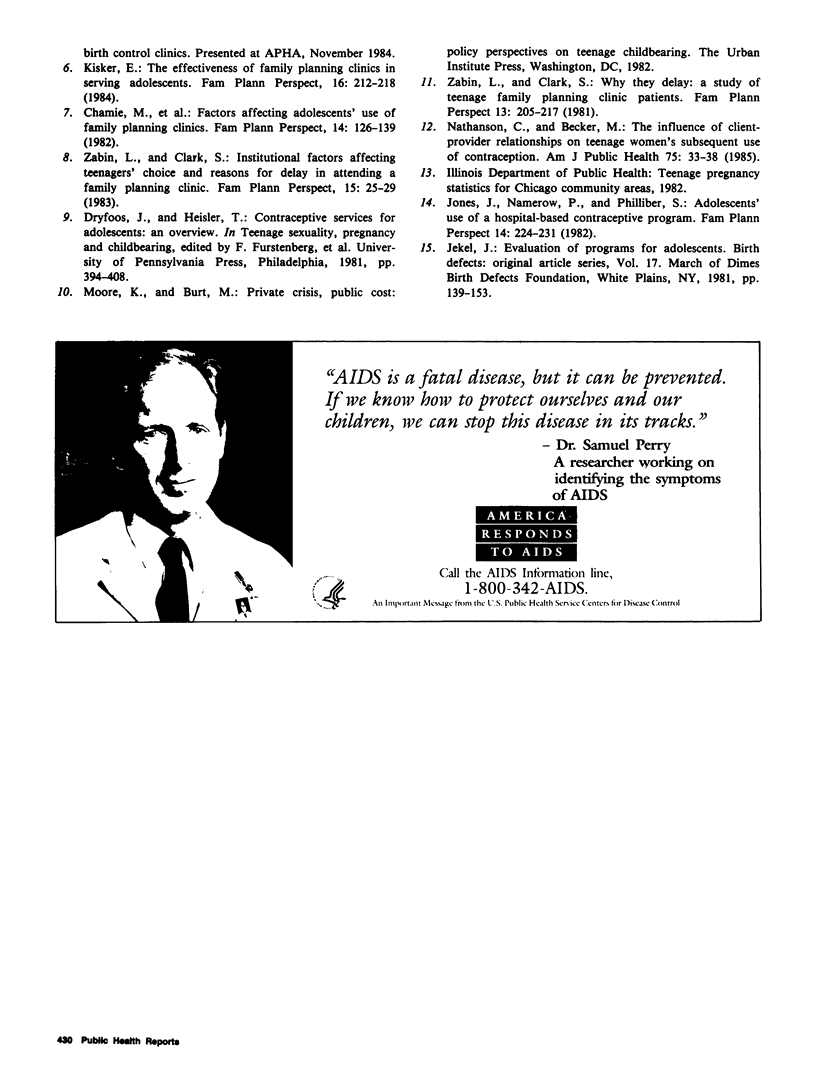Abstract
The persistent underuse of family planning services by inner-city, low-income, sexually active youth underscores the importance of testing innovative programs that maximize participation. Presented in this paper is an analysis of a Chicago public health clinic's special program for adolescents that originated from the staff's observations of the scheduling, educational, and support needs of teens seeking family planning services from a traditionally managed public health facility. Between December 1982, when the special program--the Teen Clinic--was implemented, and March 1985, more than 600 adolescents sought social support and contraceptive services--an 82 percent increase in new-patient registration compared with the enrollment before the program began. In contrast, two neighboring public health department facilities without special family planning programs for teens experienced either a small increase, 4 percent, or a modest decrease, 17 percent, in utilization by teenagers during the same period. The increased use of the study facility by teens, coupled with patients' self-reported nonuse of alternative sources of care and referral patterns, suggests that the new program was successful in recruiting sexually active teens who had previously been inadequately protected against pregnancy. The perceived institutional and interpersonal factors influencing 153 teens' initial and repeated use of the Teen Clinic, as measured by a structured survey, echo the findings of previous research. Strategies suggested by the study's findings for improving outreach and service delivery are described.
Full text
PDF








Selected References
These references are in PubMed. This may not be the complete list of references from this article.
- Chamie M., Eisman S., Forrest J. D., Orr M. T., Torres A. Factors affecting adolescents' use of family planning clinics. Fam Plann Perspect. 1982 May-Jun;14(3):126–139. [PubMed] [Google Scholar]
- Jekel J. F. Evaluation of programs for adolescents. Birth Defects Orig Artic Ser. 1981;17(3):139–153. [PubMed] [Google Scholar]
- Jones J. B., Namerow P. B., Philliber S. Adolescents' Use of a hospital-based contraceptive program. Fam Plann Perspect. 1982 Jul-Aug;14(4):224-5, 229-31. [PubMed] [Google Scholar]
- Kisker E. E. The effectiveness of family planning clinics in serving adolescents. Fam Plann Perspect. 1984 Sep-Oct;16(5):212–218. [PubMed] [Google Scholar]
- Nathanson C. A., Becker M. H. The influence of client-provider relationships on teenage women's subsequent use of contraception. Am J Public Health. 1985 Jan;75(1):33–38. doi: 10.2105/ajph.75.1.33. [DOI] [PMC free article] [PubMed] [Google Scholar]
- Torres A., Forrest J. D. Family planning clinic services in the United States, 1983. Fam Plann Perspect. 1985 Jan-Feb;17(1):30–35. [PubMed] [Google Scholar]
- Zabin L. S., Clark S. D., Jr Institutional factors affecting teenagers' choice and reasons for delay in attending a family planning clinic. Fam Plann Perspect. 1983 Jan-Feb;15(1):25–29. [PubMed] [Google Scholar]
- Zabin L. S., Clark S. D., Jr Why they delay: a study of teenage family planning clinic patients. Fam Plann Perspect. 1981 Sep-Oct;13(5):205-7, 211-7. [PubMed] [Google Scholar]


